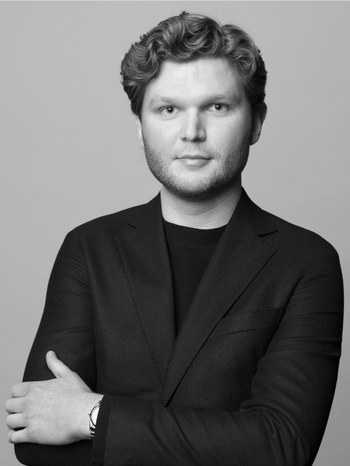Edward Hald
a rare ceiling lamp, Orrefors, 1930s.
Two-part globe in amber-toned glass with a mount in patinated brass, disc decorated with rings, stars in brass on the body. Shade diameter 60 cm, total height including mount approximately 85 cm.
Chips/damage around the top rim, micro chips on the disc.
Exhibitions
The model was exhibited at the Stockholm Exhibition in 1930 in hall 17 for lighting fixtures.
Literature
Magazine, "Hardwareman & Ironmongers' Chronicle", September issue 1930, model illustrated and mentioned p. 249.
Nils G. Wollin, "Nutida Svensk Konstslöjd i Bild", Natur & Kultur 1931, model illustrated p. 40.
Model illustrated in photographs from the 1930 exhibition in the archives of the Swedish Society of Crafts and Design and ArkDes, Stockholm.
More information
Designer
Edward Hald was a Swedish visual and glass artist born in Stockholm. He studied at the business school in Leipzig, the Artists' Association School, and he also was a student of Henri Matisse in Paris. Hald's artistry in the 1910s exhibited a modernist spirit, inspired by the Fauvist Matisse. Hald designed decorations for various models and services for Rörstrand Porcelain Factory as well as for Karlskrona Porcelain Factory. Edward Hald contributed these works to the Home Exhibition in 1917 at Liljevalchs in Stockholm and was hired by Orrefors Glassworks the same year. Together with Simon Gate and glassmaker Knut Bergqvist, he experimented with overlay glass, resulting in Graal glass. The Graal technique was entirely new and revolutionary. Hald's designs for both engraved and Graal glass display Matisse-inspired elements, humor, and contemporary motifs.
Read more





























































